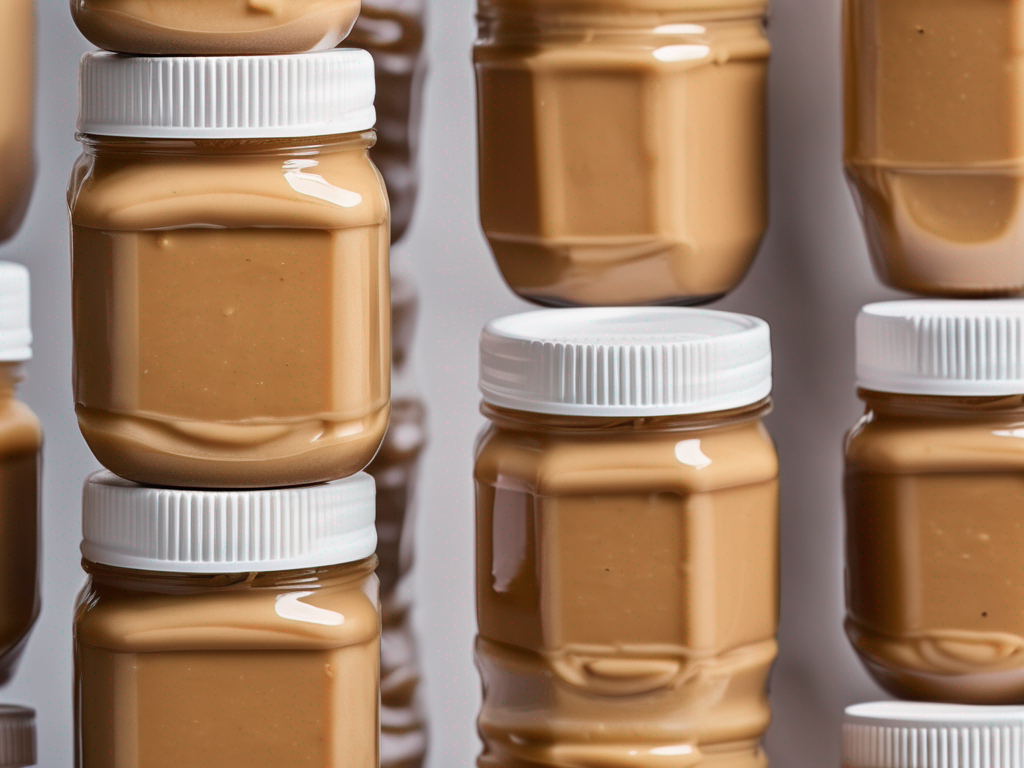
How to Properly Store Opened Peanut Butter to Prevent Spoilage and Extend Shelf Life
How to Properly Store Opened Peanut Butter to Prevent Spoilage and Extend Shelf Life
Peanut butter is a versatile and delicious spread loved by many. However, once you open a jar of peanut butter, it's essential to store it properly to maintain its freshness, flavor, and quality. Improper storage can lead to spoilage, rancidity, or the growth of harmful bacteria. In this guide, we will explore the best practices for storing opened peanut butter to ensure its longevity and safety. (Peanut butter opened)
Why Proper Storage Matters for Opened Peanut Butter
Proper storage of opened peanut butter is crucial for several reasons:
- Prevent Spoilage: Exposure to air, light, and moisture can cause peanut butter to spoil, affecting its taste and texture.
- Avoid Rancidity: Peanut butter contains oils that can turn rancid when exposed to heat or light for prolonged periods.
- Ensure Food Safety: Storing peanut butter correctly helps prevent the growth of harmful bacteria, molds, or yeast.
Best Practices for Storing Opened Peanut Butter
1. Seal the Jar Properly
- Tightly Close the Lid: After each use, ensure the jar's lid is tightly closed to prevent air and moisture from entering.
- Avoid Contamination: Use a clean utensil to scoop out peanut butter to prevent introducing bacteria into the jar.
2. Store in a Cool, Dark Place
- Avoid Direct Sunlight: Exposure to sunlight can cause the oils in peanut butter to go rancid. Store the jar in a cool, dark place away from sunlight.
- Control Temperature: Keep the peanut butter at a consistent temperature, ideally below 70°F (21°C) to maintain its quality.
3. Refrigerate for Long-Term Storage
- Refrigeration Option: While not necessary, refrigerating opened peanut butter can extend its shelf life and prevent rancidity.
- Maintain Freshness: Refrigerated peanut butter may thicken slightly but will remain safe to consume.
4. Use within a Reasonable Timeframe
- Check Expiry Date: Pay attention to the expiry date on the jar and consume the peanut butter within a reasonable timeframe after opening.
- Quality Check: If the peanut butter shows signs of spoilage, such as an off smell, unusual color, or mold growth, discard it immediately.
Additional Tips for Storing Opened Peanut Butter
1. Consider Natural Peanut Butter
- Stirring Required: Natural peanut butter tends to separate, so stir it well before storing and refrigerate for better consistency.
- Shorter Shelf Life: Natural peanut butter without added preservatives has a shorter shelf life compared to commercial varieties.
2. Opt for Airtight Containers
- Transfer to a Container: If you prefer, transfer the opened peanut butter to an airtight container for better sealing.
- Label the Container: Remember to label the container with the date of transfer to track its freshness.
3. Avoid Freezing Peanut Butter
- Texture Changes: Freezing peanut butter can alter its texture, making it grainy or difficult to spread.
- Thawing Concerns: Thawed peanut butter may separate or become less appealing in texture.
Conclusion
Proper storage of opened peanut butter is essential to maintain its freshness, flavor, and safety. By following these best practices, you can prevent spoilage, rancidity, and contamination, ensuring that your peanut butter remains delicious and safe to consume. Remember to seal the jar tightly, store in a cool place, refrigerate for long-term storage if needed, and use within a reasonable timeframe. Enjoy your peanut butter spread without worries about its quality! (Peanut butter opened)
Authoritative Food Safety References
These agencies and university labs inform every tip and health precaution we publish.
USDA FoodKeeper – Cold Storage Guidelines
Official refrigerator, freezer, and pantry timelines maintained by the U.S. Department of Agriculture.
Visit USDA FoodKeeperFDA Produce Safety Rule & Grower Guidance
Field-to-fridge handling practices that prevent contamination of fruits, vegetables, and leafy greens.
Visit FDA Produce SafetyCDC Foodborne Illness Prevention Hub
Surveillance-backed guidance on pathogens, symptoms, and steps to reduce foodborne illness risk.
Visit CDC Food SafetyUC Davis Postharvest Technology Center
University research detailing optimal storage atmospheres for produce after harvest.
Visit UC Davis PostharvestPenn State Extension – Home Food Preservation & Safety
Peer-reviewed extension bulletins on safe canning, chilling, and reheating practices.
Visit Penn State ExtensionScan your food directly and get instant safety info using our AI-powered camera feature.